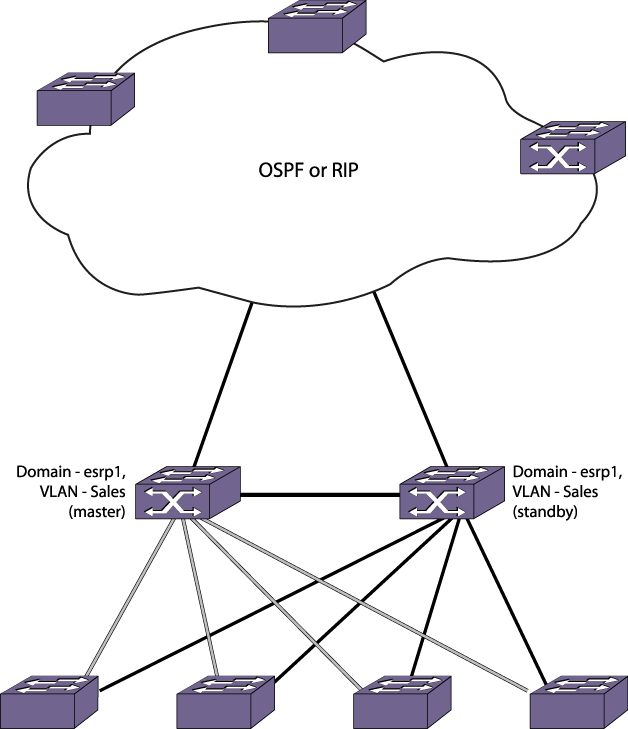The example shown in Single ESRP Domain Using Layer 2 and Layer 3 Redundancy uses four Extreme Networks devices as edge switches that perform Layer 2 switching for VLAN (Virtual LAN) Sales.

In this example, the ESRP master performs both Layer 2 switching and Layer 3 routing services for VLAN Sales. To prevent bridging loops in the VLAN, the ESRP slave performs no switching or routing for VLAN Sales while the ESRP master is operating.
There are four paths between each ESRP switch and the edge switches for VLAN Sales. All the paths are used to send ESRP packets, allowing for four redundant paths for communication. The edge switches, being ESRP-aware, allow traffic within the VLAN to failover quickly because these edge switches sense when a master/slave transition occurs and flush FDB (forwarding database) entries associated with the uplinks to the ESRP-enabled switches.
The following commands are used to configure both ESRP switches:
create vlan sales configure vlan sales add ports 1:1-1:4 configure vlan sales ipaddress 10.1.2.3/24 enable ipforwarding create esrp esrp1 configure esrp esrp1 domain-id 4096 configure esrp esrp1 add master sales enable esrp esrp1 configure ospf add vlan sales area 0.0.0.0 passive configure ospf routerid 5.5.5.5 enable ospf

 Print
this page
Print
this page Email this topic
Email this topic Feedback
Feedback